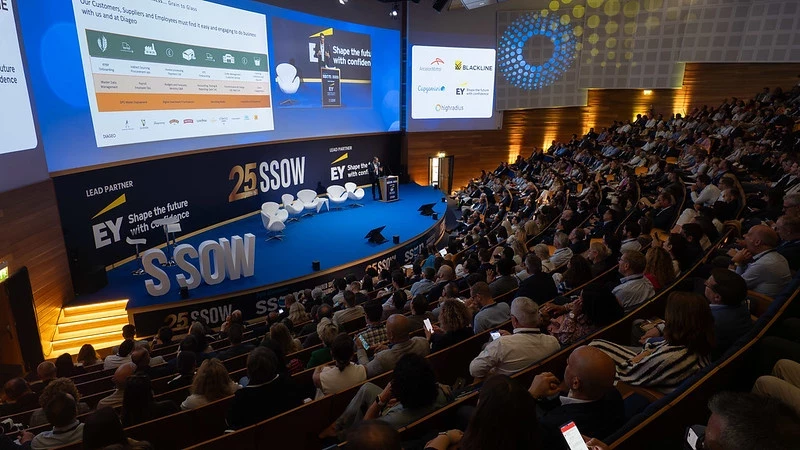Implementing Shared Services in a World Turned Upside Down:
A host of challenges, a wealth of opportunities
Add bookmark
Part 2: Creating a Productive Culture
“Either you will manage your culture, or it will manage you,” state Roger Connors and Tom Smith in their management theory classic Change the Culture, Change the Game: The Breakthrough Strategy for Energizing Your Organization and Creating Accountability for Results (Portfolio/Penguin 1999, 2011).
“Experienced leaders know that changing the culture can mean changing the game by growing faster than your rivals,” Connors and Smith continue, “beating a bad economy, revolutionising the value proposition of your organisation, or a host of other competition-beating achievements. Managing the culture so that it produces the results you are looking for has become an essential role of leadership and a core management competency. Neglect it at your peril.”
The opportunity to create a new culture
By definition, the introduction of Shared Services into an organisation presents the opportunity to create a new culture: the Shared Service Centre will to a greater or lesser extent be different from the organisation within which it is embedded, because it inevitably involves new recruits and new systems operating in the new location. The degree to which the culture of this new team will diverge from that of the parent organisation varies from company to company, however – as does the degree to which the new team’s culture influences the environment into which it has been introduced.
“For many years,” observes John Hall, “we have talked about ‘lift and shift’ when describing the transition of transactional Finance functions from the operating entities of a company to a newly established Shared Service Centre. The phrase is actually rather misleading. Experience shows that it is impossible to introduce Shared Services without having some impact on the culture of the parent company. I myself have worked across a range of different company cultures from the extremely compliant to the extremely bullish, and I can attest that they all change to some extent following the introduction of Shared Services.”
“The logic is simple,” continues John. “If operating company no. 1 transitions its transactional Finance functions to a Shared Services Centre, it will have to adopt new processes, and it will inevitably undergo some degree of change in taking those on board. When operating company no. 2 undergoes the same transition, it will have to adapt to the new status quo established by operating company no. 1. There will always be a degree of standardisation and harmonisation involved in any Shared Services implementation.”
This process of standardisation and harmonisation also involves economies of scale, of course. An investment in the necessary enabling technologies that might be unthinkable in the context of one or two operating units might be highly financially advantageous in the case of 10 or 20 – although, as John points out, such an investment may not be necessary if the company in question already has a single, integrated ERP system.
Avoiding head-on clashes
Speaking of his experience at Imerys, Christophe Boden recalls, “There was no culture clash as such, although people in the operating units were initially concerned when they heard about the planned introduction of Shared Services. The usual horror stories circulated about companies not being able to pay their vendors after implementing Shared Services. Of course there is inevitably a stabilisation phase required in the course of any Shared Services implementation. When people become familiar with the new systems and processes, however, they quickly start to appreciate the benefits of the new approach. One of the key responsibilities of management is to make sure that any head-on clashes between the new Shared Services team and the existing Finance function are avoided.”
From Shared Services to Global Business Services
The potential benefits of Shared Services go far beyond mere cost efficiency gains, in the view of Peter Villanyi. “People used to think in terms of ‘Shared Services’ that are owned by individual functions such as Finance, HR and Purchasing,”, he observes, “but increasingly today we’re thinking in terms of Global Business Services that are genuinely cross-functional. Anything that can be run as a service and be delivered as an end-to-end experience can be integrated into a Global Business Services operation, and the more processes are incorporated, the faster the trend continues.” As an employee of ConvaTec, Peter can now go to a ‘one-stop shop’ for essential services such as IT, payroll and expenses. “From my perspective as an employee of the company,” he observes, “I’m not interested in the processes behind these services. What interests me is the experience they deliver.”
The prospect of end-to-end user experiences may be enticing for the architects of global business process transformations, but it is a fact of life that the introduction of the Shared Services model will almost inevitably involve job losses. Along with the regular communication of objectives, approaches, timelines and milestones, it is essential to manage the expectations and potential anxieties of employees through proactive, empathetic and two-way communications. “It’s essential to give people the opportunity to express the difficulties they are experiencing and the doubts they are harbouring, so that these can be confronted openly,” Christophe Boden avers. At Imerys, we had people trained in social and psychological risk management precisely because job losses were involved, and it was essential to be able to intervene to head off any potential conflicts.”
The human factor
John Hall agrees with the importance of appreciating the human factor in any technology-enabled transformation. “You have to be consistent,” he says, “you need to have a structured plan, and you need to involve the leaders of the business in the design and governance of the Shared Services operation. When significant change is introduced in the workplace, the people affected by it generally break down into three groups: the enthusiasts, who embrace it; the resistors, who oppose it; and those who ostensibly accept the proposed change but covertly work to undermine it. This third group is the hardest to deal with. For my part, I often make it a practice to include a self-advertised ‘resister’ in the project team: the internal challenge provided by such an individual will ultimately make the new processes far more robust.”
Learning together
No business transformation can succeed without appropriate training measures. The necessity for process-specific training for the new members of the Shared Service Centre can present an opportunity to build a strong team culture right from the start – not least because the employees of the new organisation will either be recruited from outside the company or else transferred within it, and in either case will need some form of dedicated induction procedure as well as job-specific training.
“At ConvaTec,” explains Peter Villanyi, “we created our own induction plan to help establish the new Shared Service Centre in Lisbon. ConvaTec did not have traditional presence in Portugal, and so it was all the more important to create an induction and training plan that would meet the needs of the new recruits. This included courses on the company’s vision and culture, technical training modules, and processes for the essential transfer of knowledge from the retained organisation to the Shared Services Centre, along with refresher courses.”
Peter points out that it’s important to remember that the same training course may be consumed very differently by different people taking it. This was all the more significant in the context of the enforced remote working necessitated by the COVID-19 pandemic. “We were very conscious of the fact that our remote training offering should mimic what we would have been doing if we’d had the opportunity to deliver it face-to-face in the normal manner. For this reason, we didn’t speak of ‘training’, but rather of ‘learning together’ – because that’s something we will all be doing when eventually we can return to the office environment and start working side by side once more.”
Further information
Bunzl
Bunzl Group plc is a growing and successful international distribution group with operations in the Americas, Europe, and Asia Pacific. Focused on providing customised solutions to B2B customers, Bunzl has operations in more than 30 countries and on 5 continents. The group’s revenue and adjusted operating profit for the year ended 31 December 2020 were £10.1bn and £778.4m respectively. Bunzl Group plc is headquartered in London, UK, and listed on the London Stock Exchange FTSE100 Index.
www.bunzl.com
Imerys
The world leader in mineral-based specialty solutions for industry, with €3.8 billion revenue and 16,400
employees in 2020, Imerys delivers high value-added, functional solutions to diversified set of industrial sectors, from processing industries to consumer goods. The Group draws on its knowledge of applications, technological expertise and its material science know-how to deliver solutions based on beneficiation of its mineral resources, synthetic minerals and formulations.
www.imerys.com
ConvaTec
ConvaTec is a global medical products and technologies company focused on therapies for the management of chronic conditions, with leading market positions in advanced wound care, ostomy care, continence and critical care, and infusion devices. ConvaTec’s products provide a range of clinical and economic benefits including infection prevention, protection of at-risk skin, improved patient outcomes and reduced total cost of care. ConvaTec has 8,500 employees and does business in more than 100 countries.
www.convatecgroup.com
Jonathan Steffen
Jonathan Steffen is a communication strategist with extensive international experience in the interrelated fields of corporate communications, change communications and B2B communications.
www.jonathansteffenlimited.com
































